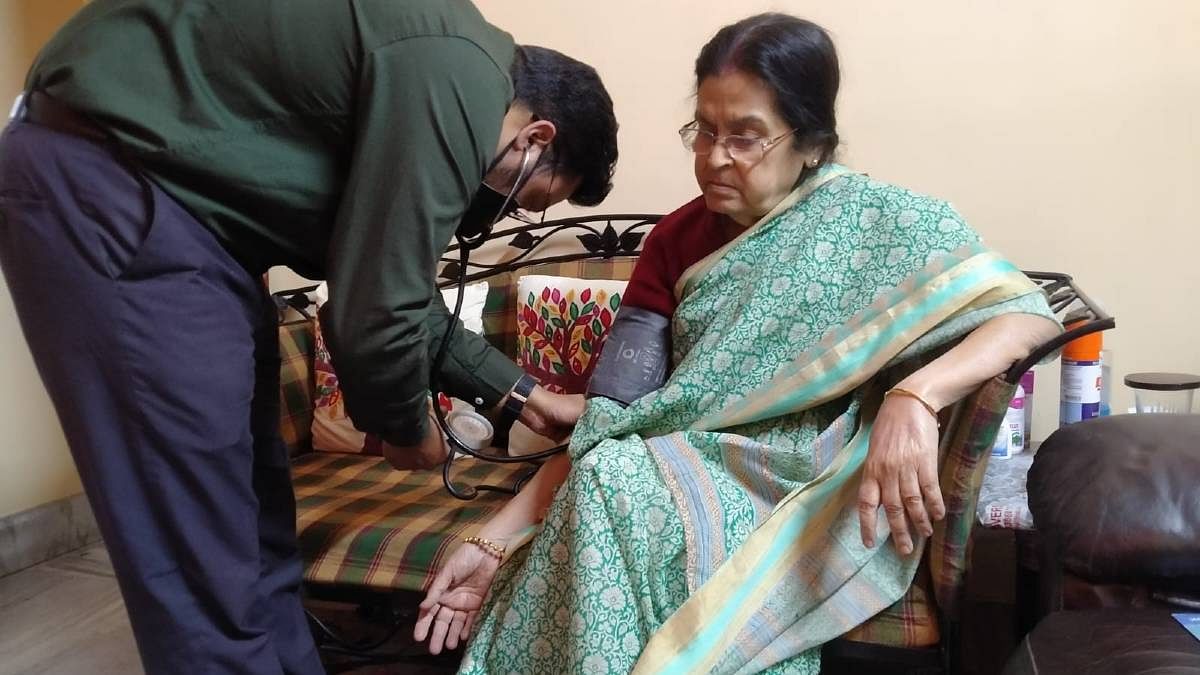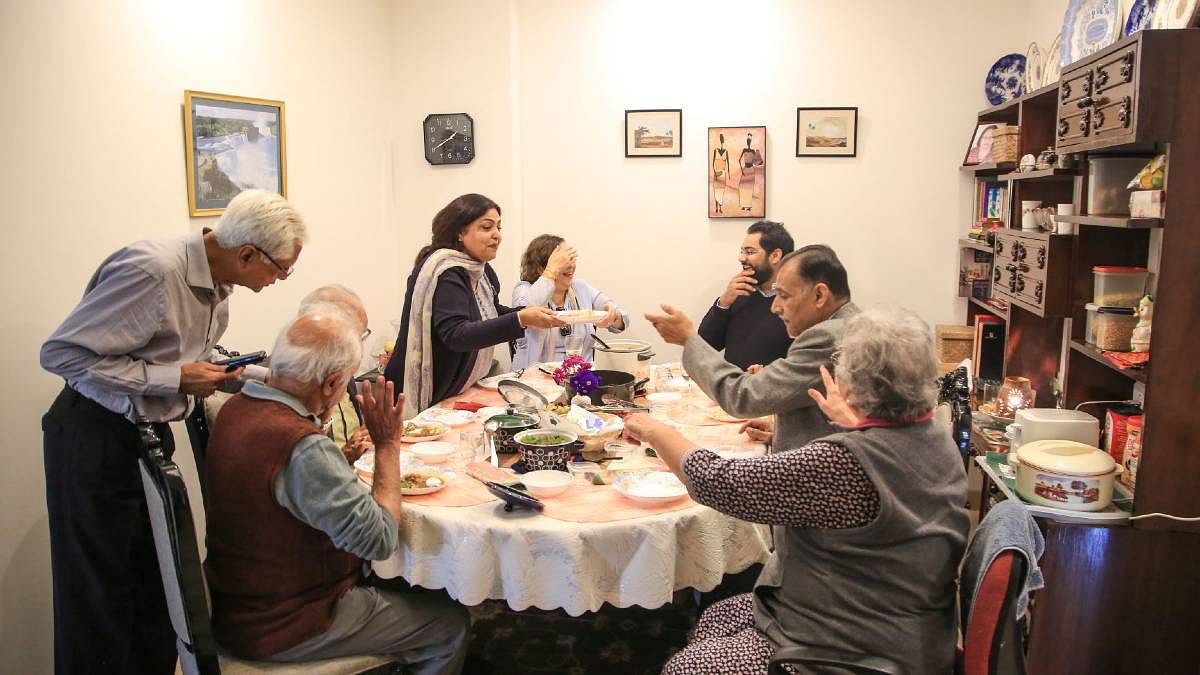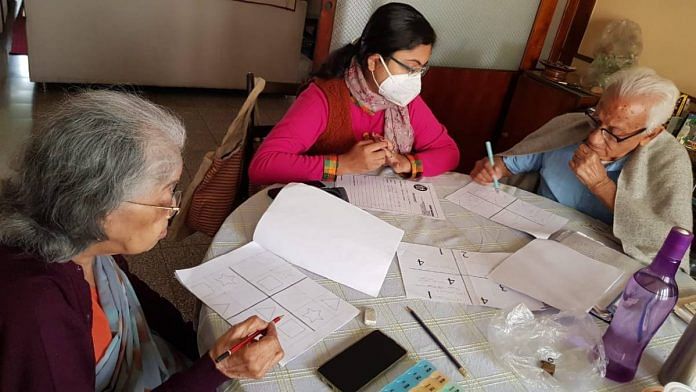New Delhi: The launch of altruistic start-up Goodfellows, which employs young graduates to provide companionship to senior citizens, made headlines last week largely because of its celebrity investor — Ratan Tata, chairman emeritus of Tata Sons.
The company is not the only one, though. With increase in life expectancy, more young Indians choosing to settle abroad, and the first generation of nuclear families now past their retirement age, the business of eldercare — not just healthcare but also hand-holding senior citizens living on their own in their twilight years — has emerged as a burgeoning service sector across cities.
From well-funded celebrity-backed initiatives to small companies set up to meet a demand that is emerging and ever increasing, eldercare as a sector looks all set to expand exponentially in the coming years.
The initial players are in all sizes. A fledgling firm in Kolkata has been doing it for the last two years, while heavyweight Max India’s initiative ‘Antara’ — which piloted one of India’s better-known residential communities for senior citizens in Dehradun — has now expanded into assisted care services and medical products.
However, doctors point out that the advent of geriatric care as a medical discipline in India has not quite kept pace with the business initiatives.
Also read: India’s senior citizens are an untapped group. For startups, they can mean new business
Elderly population in India
Better healthcare and living standards have ensured that India’s life expectancy has gone up significantly over the last few decades. That is why India’s elderly population is on the rise.
According to the ‘Elderly in India 2021’ report released last year by the Social Statistics Division of the National Statistical Office, Ministry of Statistics and Programme Implementation, there were nearly 138 million elderly persons in India in 2021, comprising 67 million males and 71 million females.
The report said that the growth of the elderly population accelerated mainly due to decrease in the death rate because of various health interventions after Census 1981.
“The addition of the elderly population during 2001-2011 was more than 27 million…In 1961, 5.6% of the population was in the age bracket of 60 years or more, the proportion has increased to 10.1% in 2021 and further likely to increase to 13.1% in 2031,” it further noted.
The challenges of dealing with a population that is aging, however, is a global issue. The years 2021-2030 have been declared by the United Nations as the ‘Decade of Healthy Ageing’.
The government of India too is aware of the challenge. In the course of the last two years, the ministry of social justice and empowerment has set up at least seven committees to look into the problems of India’s aging population. There are other initiatives too. In June 2021, the government launched the SAGE (Seniorcare Aging Growth Engine) initiative and SAGE portal.
According to a government statement, “The SAGE portal will be a ‘one-stop access’ of elderly care products and services by credible start-ups…The start-ups will be selected on the basis of innovative products and services, which they should be able to provide across sectors such as health, housing, care centres, apart from technological access linked to finances, food and wealth management, and legal guidance.”
In September last year, a toll-free helpline for senior citizens was launched that would provide guidance on various pension-related, social and legal issues.
The business of care
Nabamita Bhattacharya, one of the founders of Kolkata-based start-up Buddy Back Home, which provides care and companionship to the elderly, says the idea came to her in the early days of the Covid pandemic when she found many elderly people around her whose children lived abroad, wondering who would take care of them should they fall ill.
“This is a constant worry not just for the elderly who stay alone but also for their children who live thousands of miles away. I knew that feeling first-hand. When I was living abroad, we were constantly worried about my parents, my in-laws. We wanted to address that,” she told ThePrint.
Bhattarcharya then started Buddy Back Home with two of her friends. “All our ‘buddies’ are graduates, we do thorough background checks. Most of them are women. We believe in five Cs — care, compassion, commitment, customer and communication.”
There are three broad packages from which customers — mostly the children of the elderly — can choose.

The top package includes a weekly visit by a dedicated personal “buddy”, utility bill payments, grocery shopping, special occasion celebrations, assistance during doctor visits, healthcare needs, etc., a daily “buddy” visit for 21 days after a surgery, and even yoga and physiotherapy sessions against a nominal service charge.
The monthly packages range from Rs 5,999 per month for a couple for the full-service programme ‘Buddy All Along’, to Rs 999 for a single person for a ‘Buddy on Call’.
“All the ‘buddies’ are paid but there is an emphasis on building personal connections,” Bhattacharya said. “It is not a profit-making venture.”
A retired teacher living by herself, 66-year-old Swati Mukherjee has been a customer of Buddy Back Home for about a year now and she is all praise.
“My daughter lives in Canada. I live alone, so I long for them. When these (Buddy Back Home) girls come, it feels like it’s my daughter coming home. They come every week, talk to me, even do odd jobs such as getting a photo frame repaired or procuring a bulb that I cannot get at my local store,” she told ThePrint.
“There is 100 per cent sincerity. It feels like a family member taking care of me. I have some issues with my vision, they help me negotiate that. When I went to visit my daughter, somebody from BBH was there at the airport. It is better than asking for favours from relatives,” she added.
Meanwhile, Goodfellows, which has just started off in Mumbai, offers among its services, young graduates spending quality time with senior citizens, a companion on errands, assistance with technology, a companion on medical visits or to “embark on unique experiences”.
Geriatric medicine
The growing population of the elderly in India poses challenges for the healthcare system.
Geriatric medicine (GM) is a relatively new discipline in the country. Despite the Medical Council of India deciding way back in 1999 — when the National Policy for Older Persons was adopted — that all medical colleges should have a geriatric medicine MD programme, in reality, there are currently about 60-70 seats in the speciality.
According to a position paper of the Indian Academy of Geriatrics, published last year, India’s need for GM specialists is huge.
“According to the 2011 Census, the proportion of older people in India was 8.3% of the total population, increasing to 10% by 2020. With a total population of 138 crore, an estimated 13.8 crore people above the age of 60 are currently living in India. From this data, we can estimate the number of geriatricians required,” said the paper.
The paper stated that India needs around 59,000 geriatricians to cater to its elderly population — “As per the RPC (UK) recommendations, if we consider one geriatrician per 50,000 unit population, we need 27,600 geriatricians for 138 crore population. And according to the American Geriatric Society (AGS), 30% of the older population requires geriatric care. Thus 4.14 crore older people in India will require geriatric care. Further, one geriatrician can cater to a maximum of 700 older patients. Therefore, we will need 59,000 geriatricians in India.”
The academy on its website says it currently has a network of 1,000-plus health professionals in the country.
The first GM MD programme was started in Madras Medical College in 1998, but since then, several private institutes such as the Amrita Institute in Kochi and CMC Vellore have started teaching the speciality. AIIMS Delhi’s GM programme started just a decade ago in 2012.
In the government sector, apart from Chennai, the GM MD programme is available at AIIMS Delhi, Jodhpur’s SN Medical College, Banaras Hindu University, Calcutta Medical College, Pune’s Armed Forces Medical College, and AIIMS Rishikesh.
There is a reason why not every internist can treat old people. Dr AB Dey, former professor of geriatric medicine at AIIMS Delhi, currently with Venu Geriatric Care Centre, explained: “Earlier, they (the elderly) were seen by internists. But the concept of old age has changed significantly over time. First, of course, there are financial constraints. But there is also the understanding that an elderly person is a complex entity with unknown diseases and many different disabilities.”
He further said that changing social realities and fractured families have led to anxiety and depression. “There is an understanding that high blood pressure and pollution lead to reduction in brain capacity, hearing deficits often go unnoticed. Even though cataract surgeries have gone up, there is still a significant unmet need. We have not given enough thought to rehabilitation of old people, limiting it only to pain management. But there is more to old age than that. In fact, we are now defining new entities to better understand the problems of old age.”
One example of that, Dey said, is what is known as a “frail older person” who is just very weak and needs care according to their vulnerabilities.
Assisted living
During her last years, former British prime minister Margaret Thatcher, suffering from Alzheimer’s disease, had started living at the Ritz hotel. Dey uses the Thatcher example to highlight how senior living is a specialised sector altogether.
A persistent and, for India, the ever-growing question in eldercare, is that of affordability and accessibility of assisted living, of memory care homes where dementia patients can be given specialised care.
An estimated 8.5 per cent of the 60-plus population is said to be suffering from dementia, said Dey, adding: “There could be anything between 85 lakh to 1 crore people living with dementia right now.”

One of the earliest entrants in the field of assisted living was Antara Senior Care, which launched its first elder living community of residences in Dehradun way back in 2010. The apartments can be owned only by a person aged above 55 years. A successor can inherit them but they cannot live there unless they are past that age.
The company has launched a similar project in Noida and is also gearing up to launch its first memory home in Gurgaon next month. A memory home is a specialised living setup for dementia patients where they have specialised care — there is extra security to ensure they do not wander out and are given specialised therapy for dementia.
Rajit Mehta, CEO and managing director of Antara Senior Care, told ThePrint: “There are mainly four aspects of this — senior living residences where there are whole communities staying together, care homes for elderly who require assistance for daily activities, care at home for people who do not want to leave their homes but need additional care, and the fourth aspect is MedCare products targeted at the seniors.”
But there is a structural issue in this field, said Mehta. “Who will pay for this? Because unlike in the West, insurance here does not cover senior living or assisted living. We are currently in talks with both the government and insurance companies to find a way out.”
While Antara is part of Max India, the potential of senior living as a realty sector has caught on. Ashiana Group has multiple senior living projects in its bouquet, including care homes and care-at-home options.
There is also an effort to alleviate some of the other concerns of elders living on their own, the most important being companionship and entertainment. According to Mehta, when Antara did its first senior survey in 2020, it found that 77 per cent seniors in its sample size of 2,000 were staying alone.
Vikas Kumar, senior sales executive at Ashiana Housing, said his company started off in the senior living space about 20 years ago.
“Inside our campuses, we have a fully functional restaurant that serves breakfast, lunch and dinner and there is a facility for home delivery. There are medical services and a community centre. Also included in the monthly maintenance fee, that is between Rs 3,000 and Rs 6,000 depending on the category of flats, are three to four activities per week — walks, yoga sessions, and twice-a-week movies in our campus theatre,” he told ThePrint.
The charges for senior living at an Ashiana property range from Rs 40,000 to Rs 70,000 per month apart from a deposit. For care at home, it is between Rs 35,000 and Rs 40,000 a month.
(Edited by Nida Fatima Siddiqui)
Also read: India’s elderly population to rise 41% over next decade to touch 194 mn in 2031: Govt report



